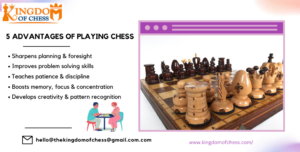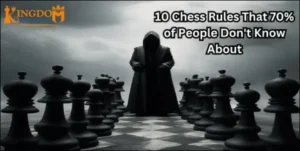Introduction
Hey there! So, you’re thinking about How to play chess for beginner? Awesome choice! Chess is one of those games that’s been around forever—seriously, people were playing it over a thous& years ago—& it’s still just as fun today. Chess is like a battle of wits, & the best part? Anyone can learn it—even if you’ve never touched a pawn before.
This guide is your ticket to mastering chess as a beginner. We’re going to break it all down for you—how to set up, how the pieces move, & a few tricks to make you feel like a pro in no time. Whether you want to impress your friends, sharpen your brain, or just enjoy a quiet game, chess has something for you. So, grab a seat, maybe a snack, & let’s chat about how to get you started on this epic adventure. Ready? Let’s make your first move!
How to play chess for beginner ?
Before you start, you’ll need:
- A chessboard: It has 64 squares (8 rows & 8 columns) in light & dark colors.
- Chess pieces: Each player gets 16 pieces—1 king, 1 queen, 2 rooks, 2 knights, 2 bishops, & 8 pawns.
- A friend to play with (or a computer if you’re practicing solo!).
The goal of chess is simple: trap your opponent’s king so it can’t escape. This is called checkmate. Let’s break it down step by step.
Step 1: Set Up the Chessboard
- Place the board between you & your opponent. Make sure a white square is on the bottom-right corner for both players. (a little trick to start right!)
- Arrange your pieces on the first two rows (or “ranks”):
- Back row (1st rank):
- Rooks go in the corners.
- Knights go next to the rooks.
- Bishops go next to the knights.
- The queen goes on her color (white queen on a white square, black queen on a black square).
- The king goes on the last square beside the queen.
- Front row (2nd rank): Line up all 8 pawns.
- Back row (1st rank):
- Your opponent’s pieces mirror yours on the other side.
Now your board is ready!
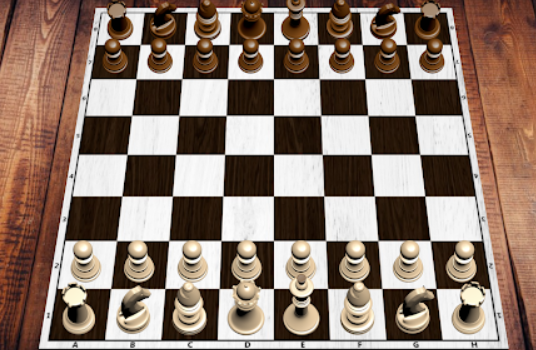
Step 2: Learn How the Pieces Move
Each chess piece moves in a special way. Here’s a quick rundown:
- Pawn: Moves forward 1 square. On its first move, it can jump 2 squares. It captures diagonally 1 square ahead. Pawns are slow but super important!
- Rook: Moves straight—up, down, left, or right—as many squares as you want (if nothing’s in the way).
- Knight: Moves in an “L” shape: 2 squares in one direction, then 1 square to the side (or 1 then 2). It’s the only piece that can jump over others!
- Bishop: Moves diagonally in any number of squares while remaining on its starting color.
- Queen: The queen can move any number of squares straight or diagonally in any direction.
- King: Moves 1 square in any direction (up, down, sideways, or diagonal). Protect him—he’s the key to the game!
Step 3: Learn the Basics
- Who goes first? The player with the white pieces always starts.
- Players take turns moving one piece at a time.
- Capturing: If your piece lands on an opponent’s piece, you take it off the board. That’s a capture!
- Check: When a king is under attack, it’s in “check.” The player must get the king out of danger (move it, block the attack, or capture the attacker).
- Checkmate: If the king can’t escape check, the game ends—it’s checkmate, & you win!
- Stalemate: If a player can’t make any legal move & their king isn’t in check, it’s a tie (draw).
Also Read: Basic Chess Rules
Step 4: Special Moves to Know
Chess has a few tricky moves that can surprise you. Here they are:
- Castling: This is a cool move to keep your king safe. Move your king 2 squares toward a rook, then hop the rook to the king’s other side. You can only do this if:
- Neither piece has moved yet.
- There’s nothing between them.
- The king isn’t in check.
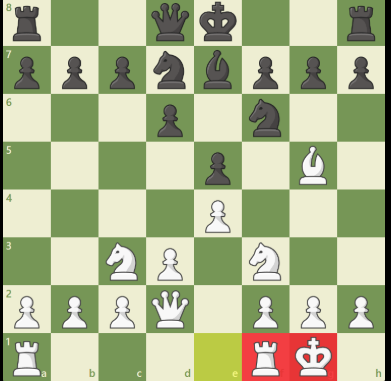
- En Passant: A rare pawn move. If an opponent’s pawn jumps 2 squares forward & lands next to yours, you can capture it on your next turn as if it moved only 1 square.
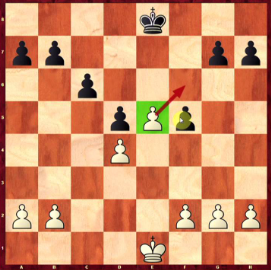
- Pawn Promotion: If a pawn reaches the opponent’s back row, it turns into a queen (or another piece). Most people pick a queen because she’s very strong!
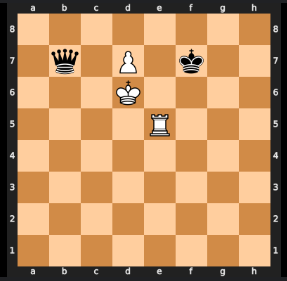
Step 5: Start Playing—Tips for Beginners
Ready to jump in? Here’s how to get going & improve fast:
- Control the Center: Move your pawns to the middle squares (like e4, d4, e5, d5). This gives your pieces more space to move.
- Get Your Pieces Out: Don’t just move pawns—bring out your knights & bishops early to attack or defend.
- Protect Your King: Castle early to tuck your king behind pawns & get your rook into action.
- Think Ahead: Ask yourself, “What will my opponent do next?” Plan your moves & watch for traps.
- Don’t Give Away Pieces: Every piece matters. Avoid losing them for no reason!
Step 6: How the Game Ends
A chess game can end in a few ways:
- Checkmate: One player traps the other’s king—game over!
- Draw: No one wins. This happens with a stalemate, if both agree to stop, or if there aren’t enough pieces left to checkmate.
- Resignation: One player gives up if they know they can’t win.
Bonus: Fun Facts & Practice Ideas
- Chess originated in India over 1,500 years ago—it was called the “game of kings”.
- The queen was not powerful from the start. She got her powers in the 1400s.
- To get better, play lots of games! Try apps like Chess.com or Lichess—they’re free & great for beginners.
Final Thoughts
Chess may appear difficult at first, but it is all about practice and having fun. Set up the board, become familiar with the moves, and play a few games to start. Soon, you’ll be spotting checkmates & planning clever traps. So, grab a board, find a friend, & start your chess adventure today!
BOOK FREE DEMO CHESS CLAS
“Want to learn chess and have fun? Check out the Kingdom of Chess at https://kingdomofchess.com/! at Koc you will not only master How to play chess for beginner, but you will become an advanced player who could influence others as well


